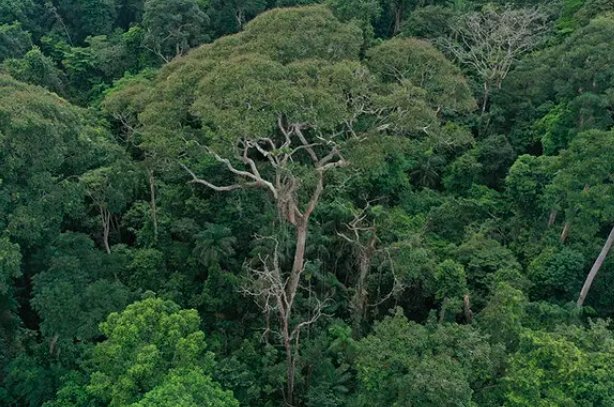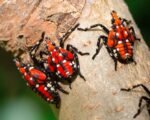A rare tropical species isn’t just surviving lightning strikes—it’s using them to wipe out its rivals. Scientists are stunned.
In the lush, storm-drenched rainforests of Panama, one tree has flipped the script on what a lightning strike means for survival. While most trees are left scorched or shattered, Dipteryx oleifera—the tonka bean tree—shrugs off the blast and somehow comes out stronger.
No charred bark. No lasting damage. Just a tree standing tall while others around it crumble.
It Took a Decade to Crack the Clue
You’d think a tree regularly hit by lightning would be a disaster case. But researchers noticed something strange while studying forest damage patterns over the years. A few trees, not just surviving, but thriving. The team from the Cary Institute started putting the puzzle together back in 2015.
Turns out, the tonka bean tree was acting like a living lightning rod. And not in a suicidal way.
In one now-famous strike, lightning hit a D. oleifera dead-on. The vines clinging to it? Fried and flung halfway across the forest. A dozen smaller trees nearby? Toast. But the tonka? Still standing. Not just alive, but greener than ever.

Trees Don’t Usually Like Getting Electrocuted
Let’s get one thing straight: lightning kills. A lot. Researchers estimate that hundreds of millions of trees die each year because of it. It’s brutal. Especially in the tropics, where storm season rolls in like clockwork.
But Dipteryx oleifera seems to be playing by a different rulebook.
One single bolt can reach temperatures hotter than the sun’s surface and carry over 100 million volts. That kind of power usually cracks trunks in half, boils sap, and leaves forests littered with wreckage.
Except when it hits the tonka bean tree.
It’s Not Just Surviving—It’s Winning
What’s even wilder is that these trees don’t just endure the strikes—they actually gain a competitive edge from them. Scientists think the secret might lie in their bark structure or the way electricity travels through their tissue. Still under investigation.
But the effects are clear as day.
-
Vines strangling the tree? Instantly scorched.
-
Smaller neighboring trees? Often killed on impact.
-
D. oleifera itself? Still photosynthesizing, looking like nothing happened.
Forest ecologist Evan Gora, who’s been watching this unfold for years, said it felt like “watching evolution happen in real time.”
A Pattern Emerges in the Lightning Zone
Lightning doesn’t hit at random. There’s a pattern, especially in dense rainforests where taller or isolated trees are prime targets. Panama’s forest canopy is no exception, and Dipteryx oleifera has a knack for positioning.
Here’s a rough breakdown of what the researchers found after years of data logging and analysis:
| Tree Species | Lightning Strike Survival Rate | Post-Strike Condition |
|---|---|---|
| Dipteryx oleifera | 93% | Thrives, no major damage |
| Cecropia | 35% | High vine mortality |
| Ficus | 20% | Trunk fissures, leaf loss |
| Inga | 10% | Tree death common |
So yeah, the tonka tree is on another level.
Lightning As a Weapon?
There’s a growing theory that D. oleifera may have evolved not just to survive lightning, but to weaponize it. A kind of botanical warfare. The tree doesn’t need to outgrow its rivals if lightning can clear the field for it.
This isn’t just speculation. Multiple instances have been recorded where a lightning bolt hits a Dipteryx and the result is a clearing of nearby competition.
“We saw vines literally ejected from the canopy,” Gora said in disbelief.
That’s not something trees usually do.
Can This Help Save Other Forests?
With lightning strikes increasing globally thanks to climate change (yes, warmer temps mean more energy in storms), scientists are getting anxious about how many forests might be at risk.
That’s why Dipteryx oleifera is getting a second look. What if its traits could help protect other species? Maybe its biology holds clues to insulating trees or designing artificial “lightning buffers.”
It’s early days. But the research could lead somewhere big.
One sentence here, just to breathe.
Trees That Use Lightning: A Sci-Fi Plot Come to Life?
Let’s be honest. A tree that “uses” lightning sounds like something out of a comic book. But here it is, rooted in real soil, in the heart of Panama.
For centuries, humans have told stories of divine trees or supernatural forests. Maybe this is one case where nature really did build something extraordinary. Not flashy. Not loud. Just quietly dominating its corner of the jungle.
What happens next? Scientists are still watching, still scratching their heads. But one thing’s certain—Panama’s tonka bean tree has earned its place as one of the strangest, most badass trees on Earth.














